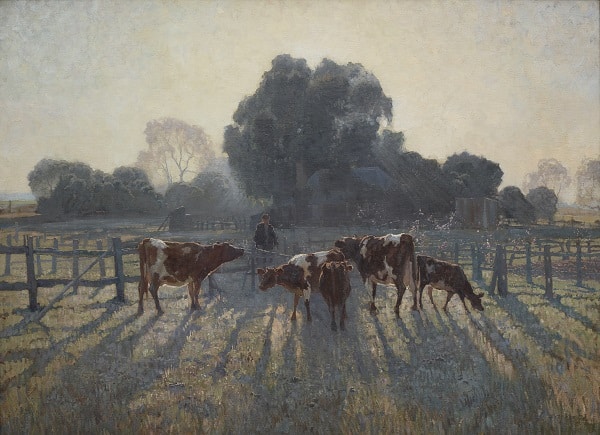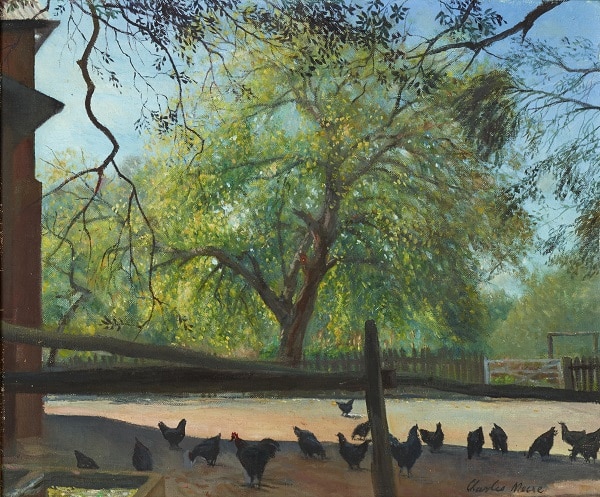The Art Gallery of New South Wales (AGNSW) is home to a vast collection of late 19th and early to mid-20th century paintings and works on paper. Curators from the gallery have drawn a selection of works from the treasury to exhibit alongside works on loan from private collectors, the State Library of New South Wales and Manly Art Gallery and Museum, in ‘Fieldwork: Landscapes West of Sydney’, a travelling exhibition touring to three regional NSW galleries; Hawkesbury Regional Gallery, Maitland Regional Art Gallery and Penrith Regional Gallery, from July 17 until May 2021 respectively.

‘Fieldwork’ shines the spotlight on a significant collection of works by renowned artists including Hilda Rix Nicholas, Julian Ashton, Elioth Gruner, JJ Hilder, Sydney Long, Lorna Nimmo, Freda Robertshaw, Sydney Ure Smith and Charles Meere, which beautifully illustrate the artists interpretations of Western Sydney’s rural landscapes where streams of light dance and shadows cavort across the open fields and rolling hills of Australia’s countryside.
The curatorial focus for ‘Fieldwork’ is inspired by works created during “artists’ camps and painting expeditions organised at the Hawkesbury region, the Blue Mountains and Sydney’s western suburbs on Darug, Tharawal and Gundungurra Country,” the gallery notes.
This particular collection of works were “Produced during an exceptionally rich period in Australian art history, many of these artworks were collected by the Gallery at the time they were made, and some are now being exhibited for the first time in decades,” shares Art Gallery of NSW Director Dr Michael Brand.

Exhibition highlights include one of Elioth Gruner’s most celebrated paintings titled Spring frost (1919). Painted in oils and made mostly en plein air at Innes Farm in Emu Plains, this much-loved painting gleams misty morning light over a small herd of cows grazing on the grasses of rural farmland on the outskirts of Sydney. Spring frost was awarded the Wynne Prize in 1919 and acquired by AGNSW in 1939.
Work by artist and teacher Julian Ashton, who was among the first to advocate the practice of plein-air painting in Sydney, showcases the artist’s passion for painting outdoors. His interest in the conventions of plein-air painting inspired many generations of artists to travel to Richmond and the Hawkesbury region to explore the wonders of the landscape and paint as Ashton and many others did, in situ.
Other key works include Sydney Long’s Midday (1896) a masterful depiction of where the edges of farmland meet the Hawkesbury River and sheep roam the pastures. Roland Wakelin’s utopian landscape titled Narellan (1917), explores the artists move towards modernist painting with experimental invigorations of colour and abstraction. Hilda Rix Nicholas’ Through the gum trees, Toongabbie (c1920) immediately situates the viewer within the artist’s gaze in a magnificent representation of an Australian landscape characterised by tall silver gum trees overlooking the valley below. Charles Meere’s, The old coach house yard, Brownlow Hill (1953) presents a delightful observation of farm life with chickens, where the artist’s painterly illuminations evoke the feeling of a warm summers day.

“Fieldwork explores how the combination of plein air painting with budding nationalism and a deepening appreciation of Australian scenery during the late 19th century, inspired landscape artists to escape the city and portray nature and rural pastimes.
“The exhibition also addresses the influence of modern art and the shock of the First World War on this tradition of landscape art,” says Assistant Curator of Australian art Nick Yelverton.
Audiences are invited to see ‘Fieldwork’ at Hawkesbury Regional Gallery from 17 July to 20 September 2020, Maitland Regional Art Gallery between 28 November 2020 and 7 February 2021 and at Penrith Regional Gallery beginning 12 March through to 9 May 2021.